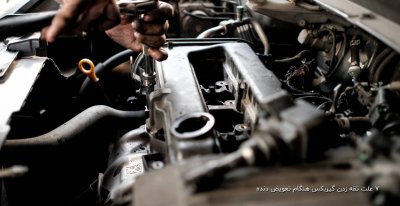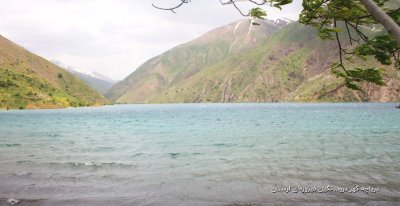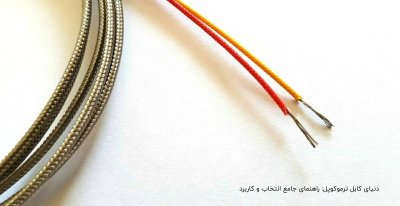Amin 4D
مدیر انجمن <A href="http://forum.majidonline.com/f

It's the story that matters. It can make or break a film. We've heard it a thousand times. Still, in many cases these phrases don't translate into concrete results, especially in the CG medium..
'The Missing Lynx', a film directed by Manuel Sicilia and Raúl García, co-produced by Spanish actor Antonio Banderas, may be one of those worthy exceptions to the rule.
The movie chronicles the misadventures of Felix the lynx and his group of animal friends as they fight for freedom while trying to stop the plans of Noah, an eccentric millionaire.
Kandor Moon's first incursion into the animated feature format transmits a mature filmmaking style, with playful use of ellipsis and association of images in editing, as well as frequent plot-points and effective directing of action sequences.
All seasoned with a good dose of humor, aimed at both young and ***** audiences, which turn it into a highly entertaining film.
The project started when Consejería de Medio Ambiente, a Spanish environmental agency, came up with the idea of working on videos for teaching ecological values to children. "What they initially had in mind was something completely different" says Manuel, "the original idea was more didactic: a film with animals where a lynx walks around [the park] with children, throws papers in a garbage can, prevents a fire from happening, etc.
But then these crazy guys (us) came up with a James Bond-type story, featuring masked soldiers, a hunter from Africa, and what not. Truth is we were lucky to convince them."
Digging a bit deeper, one understands why The Missing Lynx, in spite of being a first feature, transpires a sense of filmmaking experience: Raùl García has worked as an animator for Disney, Gaumont and other companies in films such as Who Framed Roger Rabbit, Beauty and the Beast, Aladdin, and The Lion King. He gave life to Aladdin's Genie and worked with renowned animator Chuck Jones. Manuel Sicilia, in turn, has a long career in animation.
After years of working professionally he founded Kandor Graphics in 1995, and gathered many awards and produced work for clients such as NASA, the European Space Agency and John Malkovich, among others.
Antonio Banderas, who joined them as co-producer has also been a big boost to the production of the film.
From the very beginning of the project, Manuel, Raúl and co-writer José Enrique Machuca focused their efforts on the development of the script.
They firmly believe that there is no point in having millions of polygons, the latest technology available and countless hours of rendering if the story fails.
Early on they decided to sacrifice certain aesthetic elements, such as the animal's hair, to concentrate their resources on the story.

"Half of the work for creating a script is developing its structure", says Manuel, "we dedicated a lot of time to that." They also put special effort in the conception of the characters, some of which bear classic Chekhovian traits: "we worked thinking how to make the relationships between them interesting."
Hard work paid off, and brought some surprising results: as the script evolved certain characters started taking a life of their own. Gus, an alarmist chameleon that has problems with his camouflage and sees conspiracies around the corner began stealing protagonism from Felix, the main character. "The lines for Gus were coming up too easily, as if they were being written by themselves. Animators began arguing to get a chance to animate him".
The audience proved them right, Gus has become one of the most favorite characters of the film. Raúl García compares him to Aladdin's Genie, in that it's a secondary character that grows in importance as the movie progresses, and ends up almost stealing the show.
For the production of the film Manuel and Raúl chose Autodesk 3ds Max. Animation was done using Character Studio's Biped, and the quantity and variety of animals as well as humans proved to be one of the main challenges for rigging and animation. One of the most complex cases the team faced was rigging birds' feathers.
Manuel explains that the feathers located at the extreme sides of the wings are generally used as hands or fingers, to help give bird characters more expressiveness. Due to time constraints they solved the issue by doing two types of setups, one for the acting parts, and another one for when the birds were flying.
"I would've loved to have the time to do a proper setup that could be used in all situations", says Manuel. The great work done by animators on lipsync and facial expressions was handled using traditional morph target techniques.
Custom software was also developed in-house for speeding-up production such as a point cache tool for baking the animation data from characters that helped them significantly reduce time when rendering many frames, as well as enhancements to the Biped system.
Another challenge posed by the film was the great number of landscapes that had to be created. The 3D sceneries needed to resemble real places from Andalucía, and the public was expected to be able to recognize some of them. Characters get to travel a lot through southern Spain, from Doñana to Almería, and according to Manuel the amount of landscapes turned it into some kind of road movie.
"Joaquín Catalá and Dani [Daniel Alejo], the ones who coordinated this task did a great job, they managed to automate much of the process and output a great number of landscapes while retaining that natural touch."
The artists built a library of 3D elements that was used to quickly give form to landscapes and then concentrate on polishing and giving final shape.
When water was required, animated maps were used to emulate it, and for close up shots of liquids the team resorted to particles.

Lighting was considered an essential aspect of the film by the directors. Manuel thinks that using global illumination or ambient occlusion poses the risk of making CG animated films look too much alike, and that it's important to have a clear intention behind the lighting design of a scene.
The Missing Lynx team used ambient occlusion to speed up rendering, but they put special care in the lighting process, with the aim of conveying emotions, providing special moods for certain scenes (such as the jungle-like green light in the final fight between Felix and Newman), and capturing the colors and light characteristic of southern Spain.
Part of the team from Kandor actually traveled to places such as the desert of Almería, to observe the vegetation, animals, colors and effects of light from up close. The result of all this hard work can be readily appreciated in the film, as well as the attention dedicated to texturing.
"We used many layers, because Javier Fernández, who worked both in art and production, loved to have as much control as possible for changing things in post.
" An average shot had between 5-10 layers, and a complex one could have as much as 26. The software in charge of handling the 2K frames was After Effects. This method of keeping flexibility for manipulating complex scenes would prove to be very helpful. As the final deadline approached, Manuel was still not satisfied with the look of one particular scene, a mist-covered forest where Felix and friends meet a pack of wolves.
Ten days before the first public screening, they decided to change the look of the scene, and compositing helped them quickly experiment with new ideas and achieve the result they wanted.

The Missing Lynx was screened publicly for the first time in Animadrid, the Spanish animation festival. "We were scared", says Manuel, "the beginning of the film runs pretty quietly so we were scared for a while". Sergio De La Puente, who composed the remarkable music for the film, was there too. "Sergio was terrified.
Would people like it?" Then they noticed kids weren't speaking because their attention was focused on the film, and began to breathe easier. "People started to laugh, and they did it at the moments we expected. At that point we said, ok, this is working." A particular part of the film that pays homage to Spanish documentarist Felix Rodriguez de la Fuente (the main character, Felix, is named after him) brought a round of applause from the audience. "From that part on we were able to relax and enjoy the film."
The Missing Lynx won the best animated feature film award at Animadrid, and a few months later got the most important award in Spain, the Goya Spanish Academy Award. The trophy of Goya has been known to make the rounds around Granada, visiting the houses of Kandor artists. Manuel and Raúl openly state that the success of the movie is the success of the team, and have made the Goya trophy available to anyone who wants to take it home and share it with his or her family.
Also, the people from the Consejería de Medio Ambiente have been very happy with the results. The Missing Lynx has been sold to more than 44 countries, which has made it very successful in building conscience regarding the importance of environmental issues, including the endangered lynx.
Thanks to the film these ideas have reached a wider audience. "In one of the premieres we had a life-size mascot of Felix", recalls Manuel, "when children entered the theater and saw it they got scared. But after the film finished, they were the ones who came out looking for the mascot to hug him and take pictures." The film has no doubt managed to generate empathy between the characters and the younger audience. Additionally, as part of the original deal with Consejería de Medio Ambiente, 20% of film profits are going to environmental programs managed by the Junta de Andalucía.
The Missing Lynx is Kandor's first step, Manuel sees it clearly that each film is an opportunity for learning. As a result of the co-production with Antonio Banderas, Kandor Graphics has merged with Banderas' Green Moon studio, to become Kandor Moon.
The new company plans to produce 5 new films in the next 10 years and is already hard at work on their next project "Goleor: the Scales and the Sword", whose script is almost 9 years old and has been polished by Manuel and Raúl for a long time. Antonio Banderas will be more involved in the production of Goleor, lending his voice to one of the characters, helping with the casting of other actors, as well as directing them when they record their voices for the movie.
Things have changed at Kandor, The Missing Lynx was produced by a team of 40 people with a limited budget of just four million euros (US$5.6M), but the prizes obtained have opened many doors for them. Funding is no longer a problem, and the team is growing: "the logic has inverted", says Manuel, "before we almost had to take the shots out of the hands of animators, now we plan everything to maximize quality. We're already seeing a huge leap."
Changes to the pipeline include a new animation system, new ways of lighting, incorporating new software (such as moving from After Effects to Nuke), and having the freedom to work on everything they felt was missing, including improved rigging, and quality hair for the characters. In line with Pixar's model, the team at Kandor have tested the new pipeline by producing a short film called "Death and The Maiden", directed by Javier Recio, which was screened recently. Still, among all these technological innovations, the true philosophy behind Kandor resurfaces sooner than later: "Goleor will be using stereoscopic technology", says Manuel, "it's what it takes to compete in the market. Yes, I was a bit reluctant at first. For me it's a bit of a shame, I would've preferred to see part of that funding go to developing the story."




منبع: http://features.cgsociety.org/story.php?story_id=5183
آخرین ویرایش:










